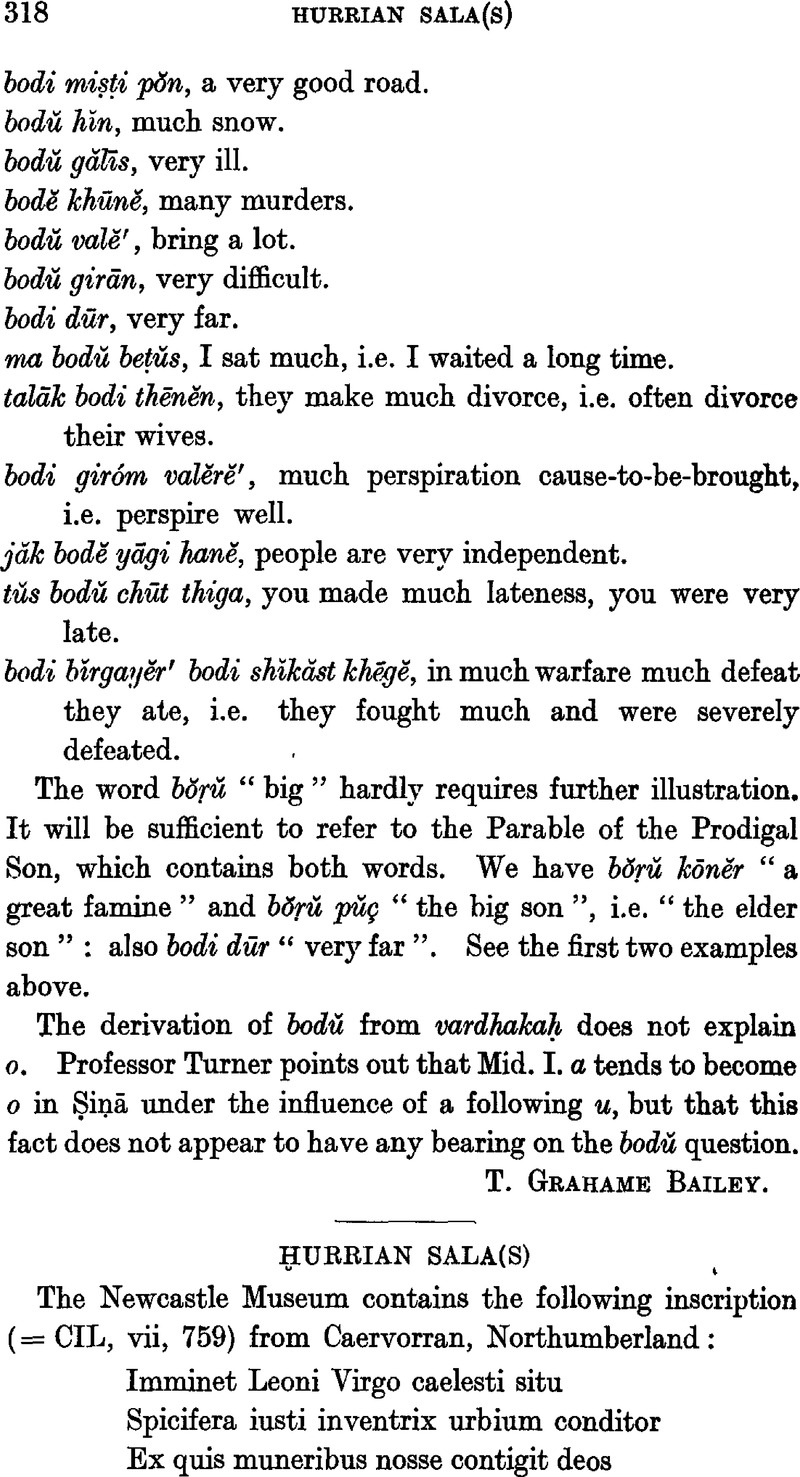Article contents
Ḫurrian Sala(s)
Published online by Cambridge University Press: 15 March 2011
Abstract

- Type
- Miscellaneous Communications
- Information
- Copyright
- Copyright © The Royal Asiatic Society 1927
References
page 319 note 1 Virgo bears an ear of corn; in another aspect she is Astraea, Justice; by virtue of her name she could be Virgo Caelestis. The poet has worked in all this: spicifera (2), Ceres (4); iusti inventrix . . . . (2), lance . . . . pensitans (5); Libyae colendum (7). The identification with Justice may be connected with the Scales which follow her in the Zodiac. The Lion, precedes her: hence imminet Leoni (1), which is verified also in the mythology of the lion-drawn Mater Divum (4). Pax and Virtus (4), if not secondary developments of one of the above, possibly represent the other stellar aspect of the Syrian Goddess, Venus-star. Virtus could refer to the Morning Star, the divinity of which regularly stands for strength in Semitic, and is probably named therefrom as 'Uzzā, 'Azīz; and Pax would be a fair Latin equivalent to Arsu, Monimos (Mun'im), Favour, etc., names of the Evening Star-god as antithetic to 'Azīz. . . .
page 319 note 2 It denotes the young daughter of the Mitannic king, and so connotes either daughter or maiden; obviously, as name of a goddess, the latter meaning is more likely; naturally the word may have had both senses.
page 320 note 1 It is not clear why dŠala was related to absim (vegetation) or spica, though the fact is certain. She ought to be a vegetation-goddess, but the evidence is supposed to indicate a goddess of snow-mountains. If this view is correct, it would seem that she must have had a secondary vegetational character (e.g. due to west-Sem. Etymology, e.g. Can. spica?).
- 1
- Cited by




